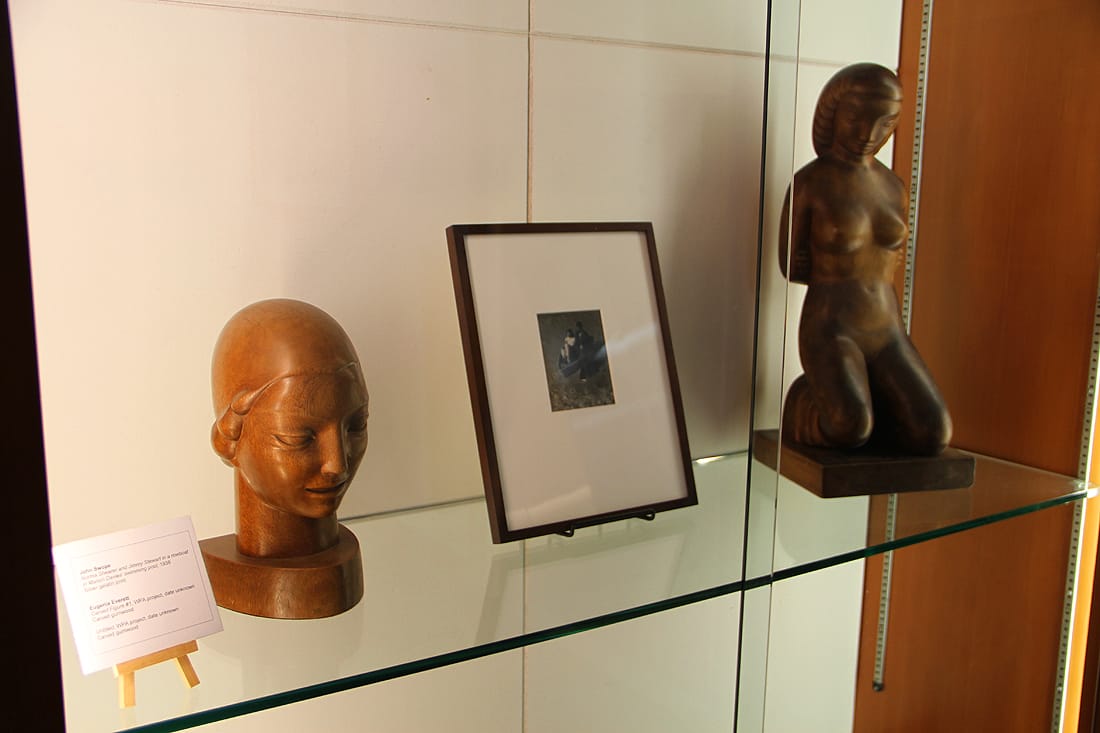
ANNENBERG BEACH HOUSE — People tend to go to City Hall and other municipal departments with a mission in mind, so they can be forgiven if they don't take a long look at the multitude of framed artworks that decorate the walls of the historic Art Deco building.
If that's the case, a jaunt down to the Annenberg Community Beach House between now and April 28 may be in order.
The beach house is hosting a show of Santa Monica's city art collection, an accumulation of over 70 pieces in a variety of mediums and styles that normally hang on walls in city offices or wait in storage for an opportunity for display.
The collection is known as the Art Bank, and is comprised of works from pop artist Ed Ruscha, multi-media artist and sculptor Alison Saar and Santa Monica resident Michael McMillen, amongst many others.
The goal of the collection is to highlight Los Angeles-area artists and collect contemporary pieces, said Malina Moore, cultural affairs supervisor with City Hall, who looks after public art and exhibits at the beach house.
"The aim is to support local artists and to enhance our community," Moore said.
The Arts Commission created the Art Bank in 1984 to bring contemporary art into the community and help both emerging and established artists by supporting and purchasing their work.
The commission chooses works through an appointed jury of professionals composed of arts administrators, artists and art organizations who scour local galleries and follow up on leads to hunt down works to add to the collection.
They then create a proposal to use funds available in the "Percent for Art" budget, a program created in 1986 that directs 1 percent of the total budget of all eligible capital improvement projects in the city toward the arts.
The heart of the collection came to the city in 1950, a number of 18th and 19th-century oil paintings and landscapes donated to the Santa Monica Library by William and Margaret McManus.
The couple had hoped it would be the basis of a municipal gallery, Moore said.
Although that has not yet come to fruition, the works remain popular and come out for display in shows like the one at the beach house.
Hanging immediately across the hall from one of the McManus pieces hangs the Art Bank's newest acquisition, called "Ophioderma Cielo," a 2005 Lita Albuquerque lithograph, an ethereal squid-like black figure partially circumscribed in a thin, white circle against a blue, black and white background.
The piece represents both the success of the arts program in Santa Monica and its greatest weakness.
"Ophioderma Cielo" was a gift of the Santa Monica Arts Foundation in recognition of contributions of three local leaders — patron Abby Sher, local artist Jon Swihart and Bergamot Station founder Wayne Blank — who contribute to Santa Monica's arts community, the first such Arts Leadership Award given by the foundation.
Although Santa Monica has a vibrant arts community, with 43 percent of its residents employed in the arts, according to a 2010 report, money to support the acquisition and repair of local artwork is in short supply.
The budget for the last Art Bank artwork purchase was $25,000 for eight works, including sales tax and framing, Moore said.
City Hall often commands better prices than a private collector, mainly because artists know that a local government can't pay the rates of wealthy individuals and also because civic-minded artists like the idea of exposing a maximum number of people to their work, Moore said.
Even bargains come at a cost the budget can ill-afford, however.
The loss of Santa Monica's Redevelopment Agency hit the arts budget hard, as have past and future cuts to the Community & Cultural Services Department.
"With the arts, there's so little money for so many needs," said Michael Myers, chair of the Arts Commission.
Myers, who spends his days running the Ruskin Group Theatre and associated acting school, has spent his eight years on the Arts Commission trying to balance a multitude of priorities facing Santa Monica's artist community.
Acquisition of new works can't always top that chart, particularly when the same dollars must also go to the repair of publicly-owned artwork. The department is about to embark on a complete review of its public art collection to identify repair needs and begin working them into future arts budgets.
Instead, they're using innovative partnerships, such as one with the Herb Alpert Foundation to place two statues on Olympic Boulevard for two years on a loan, Myers said.
"They're so entrepreneurial, and so creative," he said, referring to the cultural affairs staff who care for the city's art collection while also planning 2013's Glow, an internationally-recognized public art event that will take place in September.
Although Myers doesn't see the art collection expanding any time soon, the availability of high-quality work in public locations is a boon to the community.
"It makes high-quality art accessible to people who might otherwise not be able to see it," he said. "Anything we can do to give people access to the arts is a good thing."
ashley@www.smdp.com

